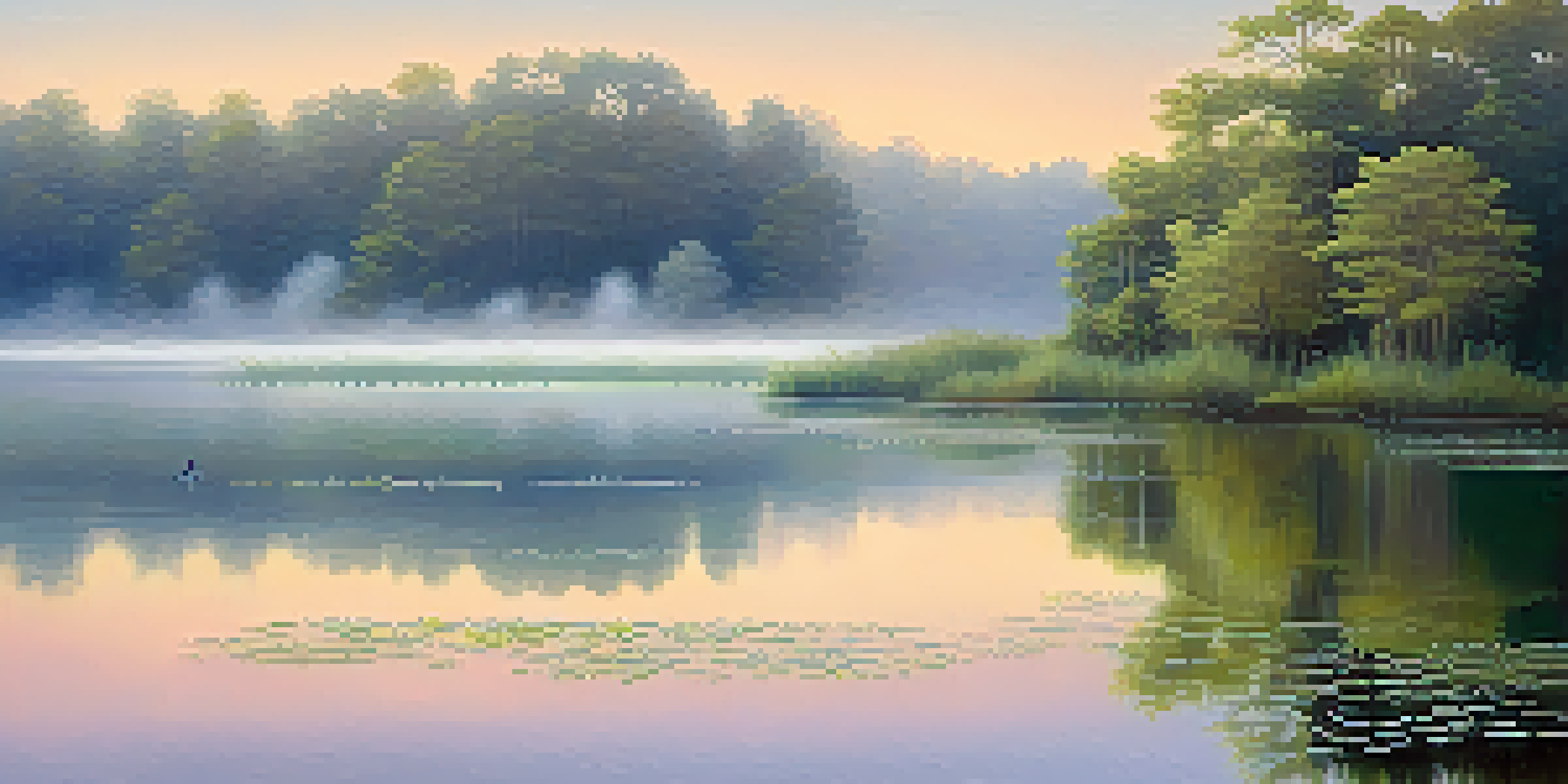The Psychological Impact of Color Grading in Film Storytelling

Understanding Color Grading in Film
Color grading is the process of altering and enhancing the color of a film. It plays a crucial role in setting the mood and tone of a story, influencing how viewers perceive the narrative. By adjusting hues, saturation, and brightness, filmmakers can evoke specific emotions and responses from the audience.
Color is the keyboard, the eyes are the harmonies, the soul is the piano with many strings.
For instance, a warm color palette might create a sense of nostalgia or comfort, while cooler tones could evoke feelings of sadness or detachment. These choices are not merely aesthetic; they are fundamental to storytelling. Color grading can subtly guide the viewer's emotional journey throughout the film.
Ultimately, understanding color grading is essential for appreciating how films communicate beyond dialogue and action. It’s a powerful tool that shapes the viewer's experience and can even alter their interpretations of the story.
The Emotional Effects of Warm Colors
Warm colors, such as reds, oranges, and yellows, are often associated with feelings of happiness, excitement, and warmth. In film, these colors can be used to create inviting atmospheres or highlight moments of passion and energy. For example, a romantic scene bathed in soft golden light can intensify the emotions shared between characters.

Moreover, warm colors can stimulate action and engagement, capturing the viewer's attention. This is why many filmmakers strategically use warm colors during pivotal scenes or climaxes to heighten emotional stakes. They draw audiences in and make them feel part of the story's intensity.
Color Grading Sets Film Mood
Color grading enhances a film's emotional impact by altering hues and saturation to reflect the story's tone.
However, it's essential to balance these tones, as overuse can lead to overwhelming sensations. The key is in moderation, ensuring that the emotional impact remains genuine and relatable.
The Psychological Impact of Cool Colors
Cool colors like blues, greens, and purples often convey calmness, sadness, or introspection. Filmmakers use these tones to create a sense of distance or to reflect a character's emotional state. For instance, a scene drenched in blue might evoke feelings of loneliness or isolation, resonating with the audience on a deeper level.
Colors, like features, follow the changes of the emotions.
Additionally, cool colors can help create tension or suspense in a narrative. Think of horror films that use dim lighting and blue hues to foster an unsettling atmosphere. This strategic use of color pulls viewers into the psychological themes of fear or anxiety, amplifying the overall impact.
Cool colors, when used thoughtfully, can enhance the storytelling experience by providing emotional depth and complexity. They remind viewers that not all narratives are straightforward; sometimes, feelings are layered and multifaceted.
Symbolism of Colors in Storytelling
Every color carries symbolic meanings that can alter the audience's perception of a story. For example, red often symbolizes danger or passion, while green can signify growth or envy. Filmmakers leverage these associations to enrich their storytelling, using color as a visual language that speaks to the viewer's subconscious.
In films like 'The Sixth Sense,' the color red is used to signify the presence of ghosts, creating an emotional connection to the narrative's underlying themes. This intentional use of color helps audiences engage with the story on a more profound level, often leading to moments of realization or reflection.
Warm and Cool Colors Evoke Feelings
Warm colors create inviting atmospheres, while cool colors convey calmness or sadness, influencing audience emotions.
By understanding the symbolism of colors, filmmakers can craft narratives that resonate with audiences, evoking emotions and thoughts that linger long after the credits roll.
The Role of Color in Genre-Specific Storytelling
Different film genres often employ color grading to establish their unique identities and atmospheres. For instance, horror films may use desaturated colors to create a bleak, unsettling feel, while romantic comedies often embrace vibrant, warm hues to evoke joy and excitement. This genre-specific approach helps set audience expectations right from the start.
Take, for example, the contrasting color palettes in 'Mad Max: Fury Road' versus 'La La Land.' The former uses harsh, gritty colors to reflect chaos and survival, while the latter employs bright pastels to convey whimsy and romance. These visual choices support the storytelling by amplifying the emotional and thematic elements of each film.
Ultimately, color grading becomes a signature element of a film's style, helping to create a visual language that communicates themes and emotions specific to each genre.
Color Grading and Character Development
Color grading not only influences the overall mood but also plays a significant role in character development. Filmmakers often use color to represent a character's emotional journey or transformation. For instance, a character who starts in dark, muted tones may gradually shift to brighter colors as they find hope or happiness.
This technique provides visual cues for the audience, allowing them to track a character's growth or decline without relying solely on dialogue. It deepens the viewer's connection to the characters, making their experiences feel more relatable and impactful.
Color Symbolism Enhances Storytelling
Colors carry symbolic meanings that filmmakers use to deepen narratives and resonate with viewers on a subconscious level.
By utilizing color grading in character arcs, filmmakers can create a more immersive storytelling experience, allowing audiences to engage with the narrative on a deeper emotional level.
The Future of Color Grading in Film
As technology advances, the possibilities for color grading in film storytelling continue to expand. With the rise of digital filmmaking, filmmakers have unprecedented control over color manipulation, allowing for more nuanced and intricate storytelling methods. This evolution opens new doors for creativity, enabling artists to push boundaries and explore unique visual styles.
Moreover, the integration of artificial intelligence in post-production processes is set to revolutionize color grading. AI can assist in analyzing footage and suggesting color palettes that enhance the narrative, potentially leading to more cohesive and emotionally resonant films.

As we look to the future, color grading will likely remain a critical component of film storytelling, shaping how audiences experience and interpret stories on screen.